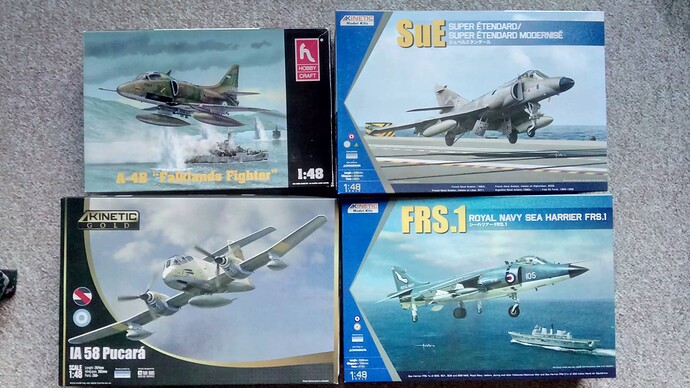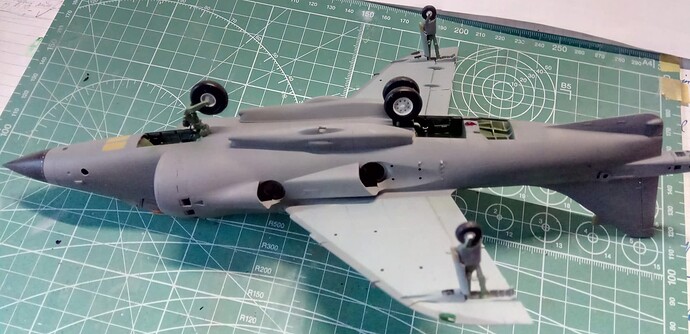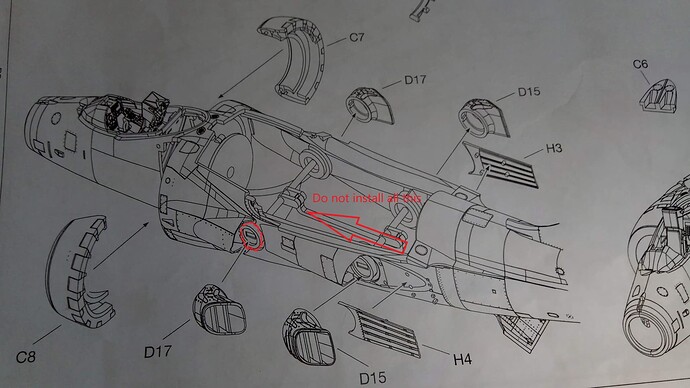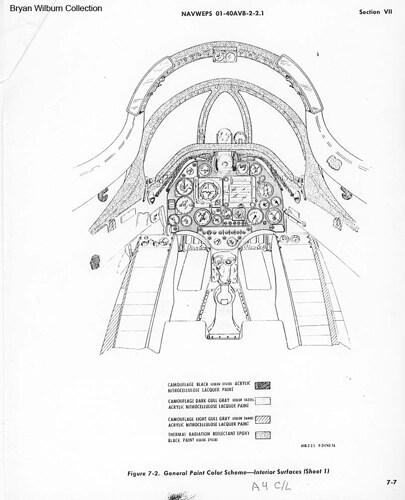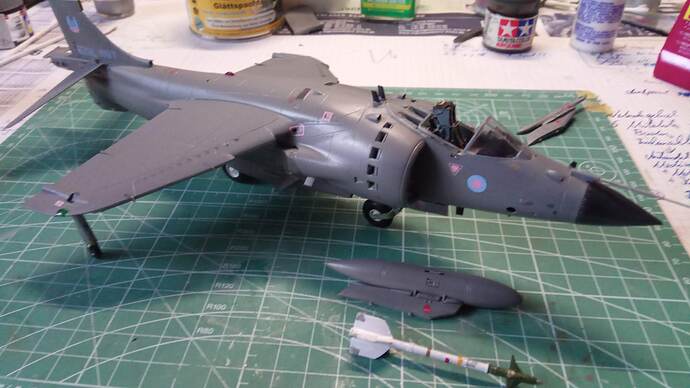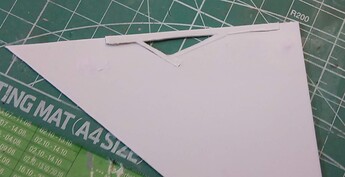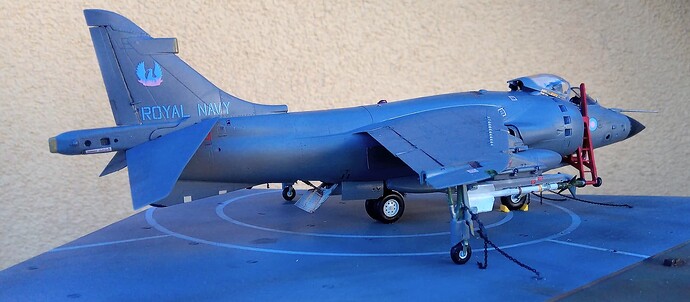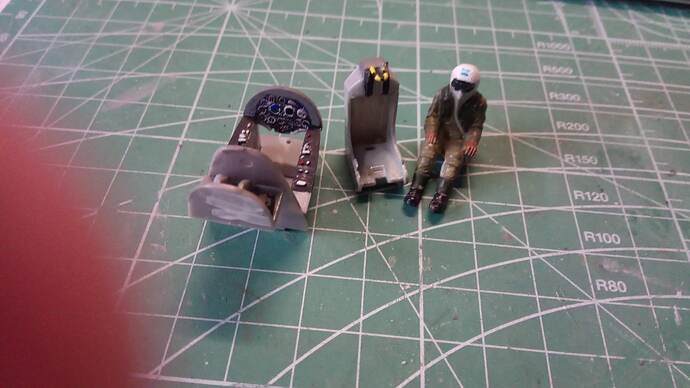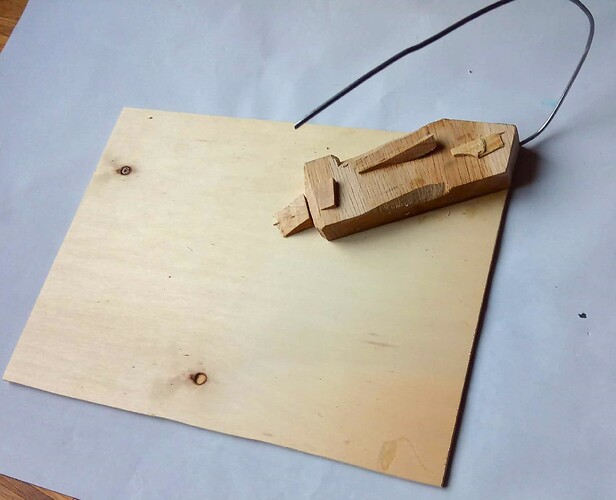I am a bit lagging with the blog and must admit that I stopped making pics for a while due to high bloodpressure and the urgent feeling to throw the kit against the wall.
Everything ok yet, I upgraded the cockpit with the Eduard painted PE
But look at the seam in the middle of the seat, which is only partly covered by the cushion  :
:
It has been rescued by Eduard not completely finished:
Unfortunately it continued this way. I spend a lot of time carefully alignining the inlet ducts as seamless as possible, but the outside covers required a huge amount of sanding.
Then the worst of all: The engine face is integrated in a bulkhead supporting the 2 fuselage halves.
So far so good, fuselage fits well togetether, but the top wing did not fit at all. I had to remove it, massage it, glue it again, sand, fill… The aft part of the wing part was too high, the forward part too wide.
And when then I installed the non fitting inlet duct covers I was so fed up that I forget to make pictures.
I have some pictures of the problems I faced since. EVERY part was fighting me
Actuators of flaps and ailerons: one locating hole missing, not fitting anyway due to different thickness of flap and wing.
Tailplanes have more anhedral than main wings. This is how they should be installed: The 2mm thin tailwings should be glued to a kind of backing plate wiht neither positive fixation in any direction.
I finally fixed them temporarily on the model, put the model in a horizontal position and supported the tailplanes when the position looked right until the glue dried.
Even weapon pylons fought back with completely uneven surfaces and too shallow location holes
Even after a lot of sanding they were only fitting using brute force.
However, the result of all this fight is this:
Btw the nosecone is too large in diameter, too.
I will finish it in the middle seagray/barley gray colors of 809 squadron. Looks just most attractive to me.
To sum up the challenges I encountered:
- Instructions have nice clear pictures but nearly no colors for interior parts. Some parts are numbered wrong, some not shown where they go
- location holes missing in many places, holes to shallow
- part fitting is really bad. Sometimes mould misalignment, sometimes like the seat “round edges”, sometimes I think the material needed some strengthening to prevent warping. Sometimes, like the tailplanes the design is simply bad.
- I do not need nice fine engravings when I have to sand away so much material that I have to rescribe them in highly visible parts
I had build short run kits which gave much less trouble…
Positive up to now is the extensive decal sheet and the outside paint and decaling instruction.
As mentioned before I had do download the GR 3 instructions to understand where some parts go. They are so much better. Hope the fit is better too. Looks like the kit design changed a bit too.
Hope the Pucara is better.
I still like the SHAR and will build the very old Tamiya just for comparison.
Cheers
Tom
![]()
